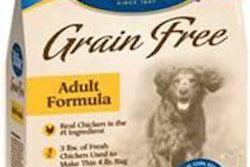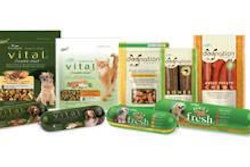Whether or not you place much importance on ranking websites, you can be sure pet parents do. It's always wise to be aware of what is said about your brand and environmental ranking is no exception. A clear benefit of reviewing these rankings is the wealth of product development ideas gained from what is of apparent importance to our customers.
Greenopia recently updated their Pet Food Guide. Companies are ranked by Reporting, Quality, Animal Testing, Eco-friendly Packaging, Supply Chain, and Green Building Design.
- Reporting - Both ingredient and environmental reporting were considered, based on the information available on company websites.
- Quality - Based on "a list of ingredients that seemed to be the most hazardous and/or questionable in the literature surrounding the pet food industry."
- Animal Testing - This isn't considered in the 'leaf' ranking, but companies are credited with an icon if they do not do animal testing.
- Packaging - Materials and reduced packaging were considered.
- Supply Chain - Origin and transport method.
- Green Building Design - Significant green initiatives and/or LEED certified buildings.
The information was obtained from various sources, according to Greenopia. "We tracked down as much information as we could for some of the biggest petfood brands in the U.S. Data was collected from the manufacturers themselves when possible (petfood has subpar environmental reporting), but also from credible third party sites such as the FDA, USDA, and PETA. We also consulted The Pet Food List who obtained their information directly from the manufacturers themselves about recalls and to verify some sourcing data."
The greenest petfoods, receiving a full four out of four 'leaves', are:
- Karma
- Wenaewe
- Raw Advantage
- The Honest Kitchen
The worst rankings (no leaves) are:
I found it a little difficult to understand how four-leaf rankings were handed out, as none of the companies who earned it met all of the judgment criteria. There may be a more complicated formula involved.
Some methods of producing environmentally friendly petfood will also improve your product. While some may cost more, others will cost less, and ideally one will balance out the other. The increase in sales to environmentally conscious consumers should be pure profit.
Some environmentally-friendly practices include:
- Organic ingredients - they automatically reduce your environmental impact in regards to chemicals.
- Whole, natural ingredients - they remove huge energy and pollution issues associated with pre-processing.
- Buy local - reduced fuel consumption and lower emissions.
- Energy efficient manufacturing - lower temperatures, less processing, and overall lower electricity use.
- Environmentally friendly packaging - consumers notice packaging and it's a common concern. Recycled packaging materials offer obvious benefits and reduced packaging can seriously cut distribution impact.
- Reduce business travel - With today's communications options, there is no reason to travel for meetings, seminars, etc.
- Employees who work at home - It's perfectly feasible for many employees to work at home, which results in serious cost reduction as well. According to Inc. magazine, 56% of Sun's workforce works from home and in 2006, Sun saved $67.8 million in real-estate costs, prevented nearly 29,000 tons of CO2 emissions, and increased worker productivity by 34%!
- Green your building - Efficient heating/cooling systems, roof gardens, and the little things like cloth towel dispensers are just a few of many ways to improve your place of business. You may even be eligible for government assistance or tax deductions for improvements.
Re-purpose waste - Petfood has often been the destination for waste from human food. Contrary to what some consumers/conservationists may believe, this isn't always a bad thing. Fishmeal, for example, is blamed for the depletion of fish stocks when in reality, most of it is waste from the human food market. 'Waste' isn't necessarily what humans can't eat, it's often what they won't eat. There may be other ways that our industry can re-purpose ingredients as General Mills did with their oat hulls, which they now sell to be burned as fuel.
In case you missed it, Petfood Industry Magazine published an article about reducing your corporate footprint. You can also download a Powerpoint presentation, 'Sustainability of petfood and the carbon footprint', by Jacques Wijnoogst.
It ain't easy being green but in this environmentally aware market, it ain't pretty if you're not.

















